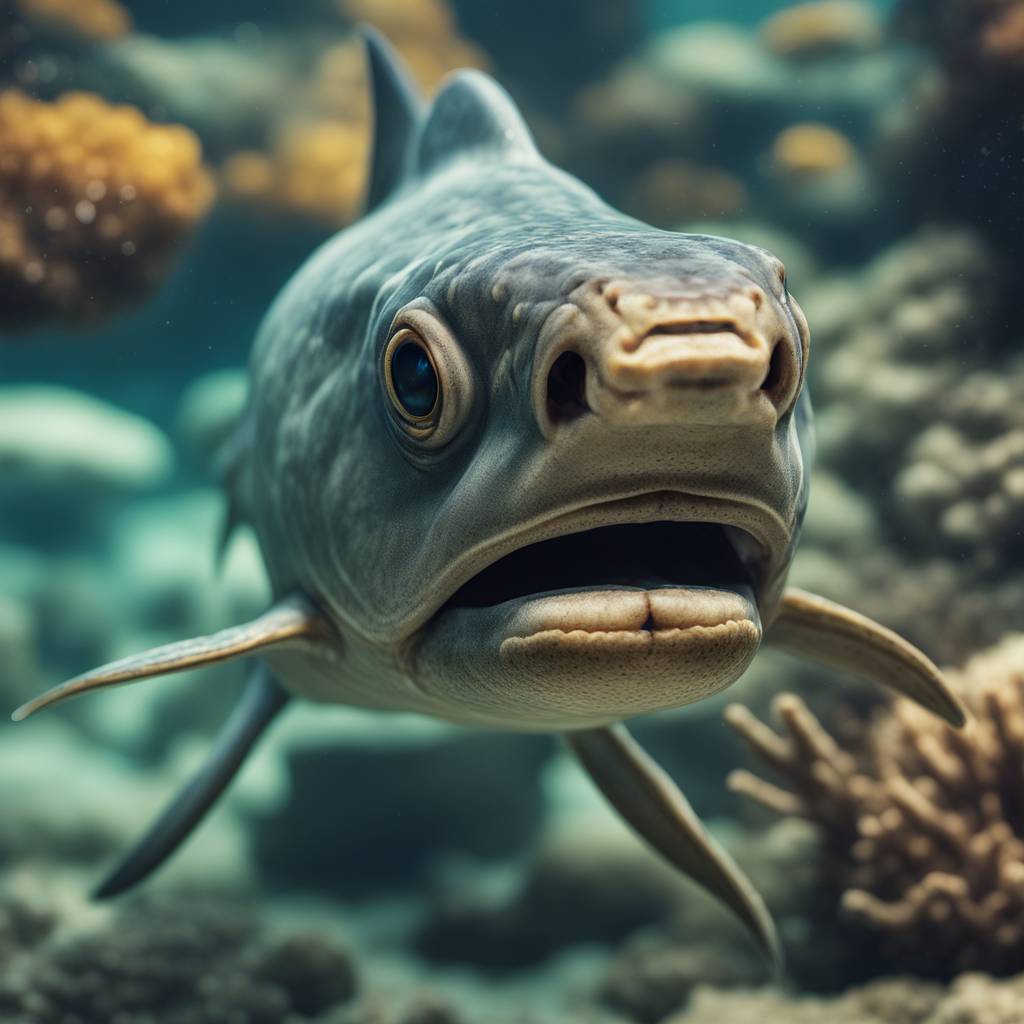Early jawless fish from the Devonian epoch, around 400 million years ago, are believed to have used bony projections surrounding their mouths to modify the mouth’s shape while they collected food. A team of experts from the University of Birmingham used CT scanning techniques to create 3D images of these early vertebrates to study feeding behaviors in the absence of jaws. Different jaw shapes and structures can indicate various feeding strategies, with theories ranging from biting and slicing to filtering food from sediment or water.
In a study published in Proceedings of the Royal Society B, the team of palaeontologists focused on a jawless fish called Rhinopteraspis dunensis, examining the structure and arrangement of finger-like bones projecting from the lower lip of its mouth. They believe these bones helped control the mouth’s size and shape as the animal captured food particles from the surrounding water. This detailed visualization provided new insights into how these ancient vertebrates fed and interacted with their environment, shedding light on the early evolution of vertebrates without jaws.
Senior author Dr Ivan Sansom highlighted the benefits of CT scanning techniques in revealing new information about ancient vertebrates and allowing the examination of precious specimens without damaging them. Lead author Dr Richard Dearden discussed how fitting all the small bones of the animal’s mouth together provided a more integrated understanding of its feeding process. The reconstructed images suggest that these jawless fish had limited movement in the bony plates around their mouths, making hunting unlikely, but allowing control over mouth opening for filtering food from the water.
Contrary to current hypotheses that suggest a trend towards increasingly predatory behavior in vertebrate evolution, the findings of this study propose that early vertebrates exhibited a range of feeding behaviors long before jawed animals appeared. The diversity of feeding strategies observed in these early vertebrates challenges the notion of a linear progression from passive food consumption to active hunting. By exploring the feeding mechanisms of jawless fish from the Devonian epoch, researchers are gaining new perspectives on the complex evolutionary history of vertebrates.
Funded by the Leverhulme Trust, the study is part of a collaborative project involving the University of Birmingham, the Natural History Museum, the University of Bristol in the UK, and the Naturalis Biodiversity Centre in the Netherlands. Through partnerships between institutions and the application of advanced imaging techniques, researchers are able to deepen their understanding of ancient vertebrates and their feeding behaviors. This interdisciplinary approach is essential for unraveling the mysteries of early vertebrate evolution and challenging traditional hypotheses about the development of predatory behavior.













